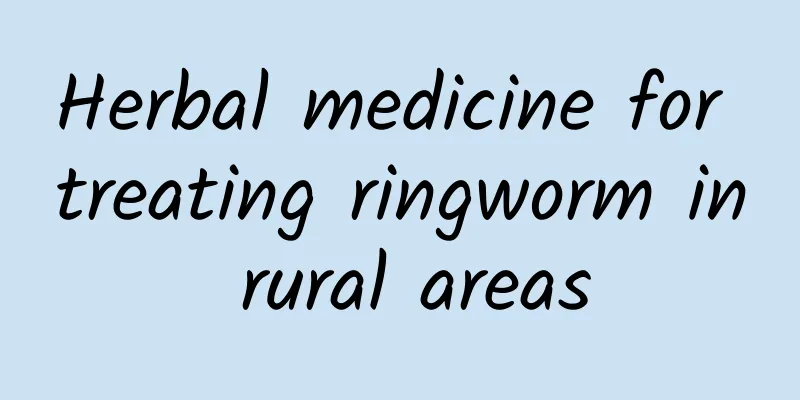The effect of drinking wild chrysanthemum water

|
Everyone should know about chrysanthemum. Wild chrysanthemum has many functions. We should usually drink some chrysanthemum tea. Chrysanthemum tea has many functions. It can relieve internal heat very well. Drinking wild chrysanthemum in water will also have many benefits to the body. Wild chrysanthemum can clear away heat and detoxify very well. It has many applications in clinical practice and can treat common influenza. Let's take a look at the effects of drinking wild chrysanthemum in water. There are many benefits of drinking wild chrysanthemum tea. Everyone should drink more chrysanthemum tea in their daily life, especially those who often sit in the office. It can effectively reduce internal heat and relieve eye fatigue. Especially those who often stare at the computer should drink chrysanthemum tea. The efficacy and function of wild chrysanthemum Wild chrysanthemum is also known as mountain chrysanthemum, roadside chrysanthemum, wild yellow chrysanthemum, etc. It is produced in most provinces and regions of the country and grows wild on hillside grasslands, bushes, and roadsides. The name of wild chrysanthemum was first seen in "Bencao Gangmu" and was included in the 2005 edition of "Pharmacopoeia of the People's Republic of China". Wild chrysanthemum is spherical, yellow-green to brown-yellow, fragrant and bitter. The best ones are yellow, stalkless, complete, fragrant, and not fully open. Those with fully open flowers, loose petals, pedicels, moisture absorption, dark color, and loose fragrance are of inferior quality. The effects and functions of wild chrysanthemum are clearing away heat, detoxifying and reducing swelling. It has inhibitory effects on Staphylococcus aureus, Corynebacterium diphtheriae, Streptococcus, Pseudomonas aeruginosa, Trichoderma, and influenza virus. Clinical use: 1. Upper respiratory tract infection and influenza: 9g each of chrysanthemum, honeysuckle, forsythia, burdock fruit, 6g each of mint leaves and licorice, decocted in water and taken orally. 2. Acute suppurative inflammation: 30-60g of fresh wild chrysanthemum and leaves, decocted in water and taken frequently. Also use 30-60g of its flowers and leaves, decocted in water, and used for external washing or mashing and applying to the affected area. 3. Hypertension: 15g each of wild chrysanthemum and cassia seed, soak in water and drink as tea (especially suitable for liver heat type hypertension). 4. Sore throat, scrofula, red and swollen eyes, etc.: Can be used in combination with other medicines. Wild chrysanthemum contains various active ingredients such as chrysanthemum alcohol, chrysanthemum lactone, amino acids, trace elements, etc. Its water extract has a significant protective effect on the cardiovascular system, can increase cardiac output, increase myocardial oxygen supply, and protect the normal physiological function of ischemic myocardium. The water extract of wild chrysanthemum and the blue-green volatile oil extracted by steam distillation have killing or inhibitory activity against a variety of pathogenic bacteria and viruses. The water extract has stronger inhibitory activity against Staphylococcus aureus, Shigella dysenteriae, Escherichia coli, Salmonella typhi, etc. than the volatile oil; it also has anti-inflammatory, antioxidant and analgesic activities. The benefits of drinking wild chrysanthemum in water are that wild chrysanthemum is sweet, bitter and slightly cold, and can clear away heat and detoxify. Chrysanthemum has the effects of dispersing wind and heat, clearing the liver and improving eyesight, and detoxifying and reducing inflammation. It is effective for eye strain, headache, high blood pressure, etc. After meals every day, brew a drink with five or six chrysanthemums to quench your thirst and promote salivation. Long-term use can prevent and treat high blood pressure and migraine. Knowledge related to the efficacy and effects of wild chrysanthemum September every year is the season when chrysanthemums are in full bloom. The sky is high and the air is fresh. It is also the best season for tea people to start preparing to pick chrysanthemums and make chrysanthemum tea. Chrysanthemums are not only pleasing to the eye, but the picked chrysanthemums can also be made into health tea. At the end of October every year, when chrysanthemums are in full bloom, the Hangzhou chrysanthemums produced in Tongxiang County and Huzhou City in Zhejiang Province, as well as the Huangshan tribute chrysanthemums produced on the top of Mount Huangshan are picked, withered with steam, and dried to a moisture content of less than 70%. When the petals are crushed by hand, they are ready for use. There are also Haoju produced in Haozhou, Anhui, Chuju produced in Chuzhou, Chuanju produced in Zhongjiang, Sichuan, and Deju produced in Deqing, Zhejiang, all of which have high medicinal effects. The medicinal effects of chrysanthemum tea are recorded in detail in "Compendium of Materia Medica": it is sweet in nature, cold in taste, and has the effects of dispersing wind-heat, calming the liver and improving eyesight. According to Shennong's Herbal Classic, white chrysanthemum tea can "treat all kinds of dizziness, swelling and pain, loss of eyesight, dead skin, rheumatism, and long-term consumption can help to improve qi, lighten the body, endure fatigue and prolong life." Here we want to especially mention the Huangshan tribute chrysanthemum, which grows in the clouds of the mountains, absorbing the spiritual energy of Huangshan and the essence of the mountains and waters of southern Anhui. Its pollution-free nature makes it of greater drinking value to modern people. Since wild chrysanthemum has so many benefits when soaked in water, why don’t you drink more chrysanthemum tea? In fact, not only chrysanthemum tea, but many teas have great effects on our body. Wild chrysanthemum is very natural. Every year during the chrysanthemum picking season, you might as well pick more chrysanthemums and save them for making tea later. |
<<: The efficacy and function of Chinese medicine Stemona
>>: The difference between Asparagus and Ophiopogon japonicus
Recommend
Diaoyu Islands: China's Inherent Territory - Historical Truth
Reprinted with permission from the Diaoyu Islands...
4.3 million was defrauded in 10 minutes? AI fraud has these unexpected methods
Recently, the topic #AI fraud is breaking out acr...
Dinosaurs ruled the earth for 170 million years, but they did not evolve into higher intelligent creatures. Why?
Since the Cambrian explosion, the sun and the moo...
The efficacy and function of duckweed seeds
Duckweed seeds are a kind of medicinal material, ...
The efficacy and function of giant clam
Chinese medicine has different effects on our bod...
Can ordinary people tell the difference between natural diamonds and artificial diamonds?
Review expert: Gan Qiang, lecturer at Beijing Ins...
In Antarctica, how to “build a house like building a car”?
2024 marks the 40th anniversary of China's po...
Be careful when eating seafood! There is no cure, you may also be poisoned by this seafood
Expert in this article: Li Lin, PhD in Food Scien...
The efficacy and function of jackal meat
Traditional Chinese medicine requires the use of ...
The efficacy and function of mussel meat
Clam meat is one of the common traditional Chines...
Famous Ships in Chinese History (VIII)
Today I would like to introduce to you the first ...
The difference between raw sun-dried ginseng and ginseng
In ancient times, ginseng was a well-known precio...
The main effects of golden cherry root
Many of our friends may not have seen the medicin...
It's a big hit! Hundreds of thousands of people watch this video every day at the subway station here...
In the past two days, Fuzhou residents Have you n...
How much does a gram of Chinese medicine agarwood cost?
Since ancient times, "agarwood saves mothers...









